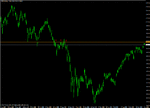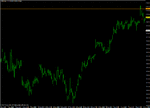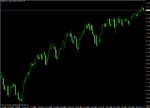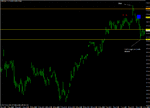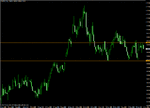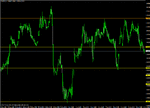Hello Tom,
I am reading your blog "Making money trading". I have read 65 pages till now and intend to finish it soon. In the beginning of it, you said that you use fibonacii retracements, r/s, ema, in confluence with pib bars. Till now, what I have read, you don't mention much about ema. So, in context of that I have a quick question.
Let's say that in EURUSD you take 21ema, and then may look for the confluence of pin bar with it ema and fibo retracement. My question is that why look for confluence with ema here? What does it tell us? I can fully understand that we look for pivot points, swing high and lows, r/s but why ema? ema is just a secondary indicator telling us the history. Is it because we have other traders who use ema and we also wish to see what they are watching?
Hello swedendenmark, the reason I don't mention the EMAs is because I don't use them anymore.
My trading has changed quite a bit since MMT although the foundation and basic principles I still apply are very much the same as those found within the thread.
I haven't read the thread since I wrote it but from what I can remember, I would say that the main differences between the way I trade now and the way I outlined in MMT are:
1) I don't trade directly off the daily (or higher) time frames any more. I merely use them to look for entries on the hourly now.
2) I don't trade as many markets. I now watch and trade just twelve markets.
3) I don't use moving averages any longer. The reason I took them off is
not because they don't work. The concept of the 50 trending and the pullback to the 10-21 zone is a powerful one and led me into many good trades. However, over time, I take things off my charts because I believe the simpler the better and I wanted to try and perfect the reading of price alone. I don't advise that everyone that follows MMT suddenly take EMAs off their charts. They are a great thing to have on your charts while you are in the learning stage because they give you an important frame of reference with which to watch the markets rhythm.
4) Although I still use Fib levels my use of them is limited. This is for the same reason above. I am trying, over time, to take things
off my charts until I am left with nothing but the price.
5) I no longer use candlestick patterns for my entries. That is to say, I don't trade using pin bars or inside bars etc. This is the main difference that everyone will notice. The reason I stopped using them is because I started to be able to anticipate where the market was going but wouldn't get the perfect setup. When I saw that they were holding me back in this regard I moved on. However, do not underestimate how powerful a tool they are and how much they can help you.
6) I don't trade using stop entry orders any longer. This is directly related to the fact I don't use pins etc any longer. I trade just watching the price and entering with market orders when I feel it looks ready to move in my anticipated direction or limit orders if I am confident in a level.
7) I don't use the same
philosophy behind my trade management. That is to say, I don't apply a trailing stop principle as methodically as I outlined in that thread. I tend to exit around levels.
So, some of you might be thinking, what do you still do that is the same and is it worth me reading the thread in the first place?
What I still do that is apply the principles that I have always said were the most important parts of that thread:
- I still use support and resistance and still draw it exactly as I outlined in that thread
- I still use the concept of the retest on all market patterns that I see
- I still use a top down approach looking first at how the market is shaping up on the daily time frame and then moving down to the hourly to fine tune
- I still use a whole lot of patience to only get in at what I feel is the right moment which can mean stalking a market for quite a time.
Having noted what I do now and how it differs, I still maintain that a new trader should follow what the thread advises. If you follow and apply the principles you will be able to grow an account and even trade for a living.
Let me repeat: nothing that I wrote in that thread has stopped working.
If you are new to this, keep the moving averages on your charts and keep plotting your fib levels. They show you areas of confluence which increases the probability of a successful trade and is one of the most powerful tools in your arsenal.
Keep using the candlestick patterns - they are confirmation for you and they are very powerful.
Have the discipline to trail your stops in the way I illustrated - it will help you to catch the big moves.
Over time, you may find you begin to slowly change your style. Some elements you will keep, some you will take off, some you will add that never existed for me. Some of you will move up time frames, some of you will move down them.
In essence, you will begin to find your own way which is the most important part of all this.

